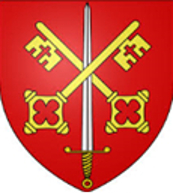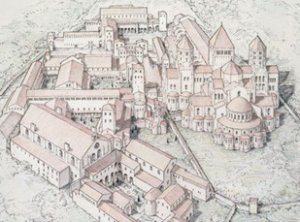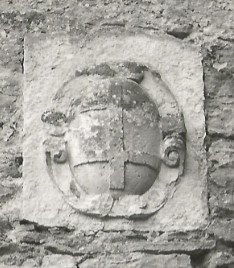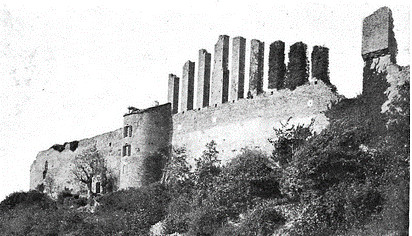History

The first text to mention the Lourdon site dates back to the Carolingians (888) and reports a sale. However, excavations indicate there were earlier occupations of the site.

Around 1093 Lourdon was elevated to the rank of deanery, an ecclesiastical constituency with agricultural revenues anda place of recovery of royalties. By this time Lourdon was also the main supplier of wheat and wine to Cluny Abbey.
But from the 12 th century was a coveted stronghold and the monastic domination it symoblised led to attacks. Lourdon, badly defended by monks who did not have a permanent garrison there and were ignorant of the wiles of war, was taken and looted many times.
In 1166 Lourdon was taken by the Count de Chalon (Guillaume 1) with the support of the lords of Brancion. Philip Augustus came to Lourdon’s aid and a treaty was signed in 1180.
In 1250, co compel the abbot of Cluny to pay the decime, a tax to help compensate for the costs of the Crusades, the bailiff of Macon threw his troops on Lourdon which was occupied until 1252.
Two centuries later, during the fights between Charles the Reckless and Louis X1 in 1470, the castle was occupied by Louis’s troops and then the next year by Burgundian soldiers.
Back in their chateau, the monks restored their property, including the donjon, under the abbacy of Jean de Bourbon. They also built new buildings.
During the first wars of religion, the castle of Lourdon served for the safeguarding of the treasures of Cluny in 1562 and 1565. But it was taken and pillaged by the Huguenots in 1574, which left it in ruins in 1576.
 Abbot Claude de Guise 55-1612) restored the castle and constructed some major buildings, including the enormous real tennis court that bears his coat of arms from 1586. He had a big cannon made, currently at the Museum of the Invalides in Paris.
Abbot Claude de Guise 55-1612) restored the castle and constructed some major buildings, including the enormous real tennis court that bears his coat of arms from 1586. He had a big cannon made, currently at the Museum of the Invalides in Paris.
By this time, the state of the castle is as follows: A 12-hectare park surrounded by 12 towers and a small chapel, an inner stronghold protected by towers including a donjon 28 meters in diameter, a major home for the abbot, the real tennis court and stables for 99 horses.
The religious troubles resume in 1589. Claude de Guise engaged on the side of the League. The castle repulsed an attack in 1593 and did not surrender to the royal troops until 1595. It was still in good condition in 1600 since it hosted a general chapter of the order of Cluny.
The castle was considered a dangerous fortress for the region. After the death of Claude de Guise (1612), the bishop of Macon, no doubt also wanting tosuppress this symbol of Cluniac domination, hastened (1613) to address a letter to the king: "... the said demolition is very important for the service of the king and very useful for Burgundy, especially as the said castle is very strong, it can only be with an army and by force of cannon ... it can ravage the whole country being between the rivers of the Loire and the Saone; that the guard is poorly assured in the hands of religious ... ".
The king's agreement for the demolition was given in 1614. Richelieu, then abbot commendatory of Cluny, demanded 60,000 pounds of compensation.
The castle was demolished in 1632 by mines, preserving voluntarily the abbey dwelling, the real tennis court and the stables. These remains were probably used as agricultural buildings for the benefit of the monks until the revolution. Then the remains of the mighty fortress are sold as national property in 1791.
 In the same family ever since, they were entrusted by an emphyteutic lease to the Association Castrum Lordo in June 2013.
In the same family ever since, they were entrusted by an emphyteutic lease to the Association Castrum Lordo in June 2013.